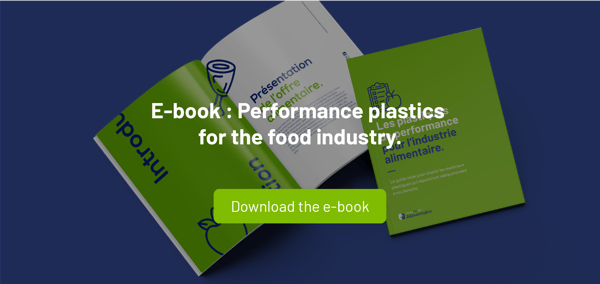Are Plastics Wear Resistant?
Wear resistance varies greatly depending on the type of material. In the case of plastics, wear resistance differs depending on their chemical composition. Thus, it is essential to identify specific needs in order to select performance plastics that best suited to the environment in which they will be used. Although all plastics will be wear-out at some point depending on the conditions of use, some plastics stand out for their high resistance to friction and wear. In comparison, most plastics will have higher wear resistance than metals, including steel. Plastics have low coefficient of friction that allows them to reduce friction between mating surfaces. Less friction means less wear on mechanical parts and equipment.
To learn more about the most suitable materials for mechanical parts, please see our performance plastics guide
The coefficient of friction is a measure of the force needed from a material’s surface to slide over another surface. As a general rule, higher is the coefficient of friction, the greater the resistance will be between the two surfaces. It will require more energy to slide the two surfaces into contact with each other. In addition, premature wear may occur because the material will be exposed in continuous to friction. A high coefficient of friction will not be convenient to reduce wear. Plastics are the most suitable materials to reduce friction and eliminate wear on mating surfaces. Some plastics, which differ far from traditional materials, are specifically formulated for applications where friction is very important, because they have significantly higher wear resistance. Some plastics may exhibit self-lubricating properties, which naturally made them slippery or smooth without using an exterior fluid and will reduce friction. Self-lubricating plastics are designed to withstand wear even in the most demanding environments.
Which Plastics Are Best Resistant to Wear?
As previously discussed, best wear-resistant plastics are those that exhibit a low coefficient of friction or self-lubricating properties. Examples include plastics from the UHMW family of products, such as TIVAR® 88, which are very resistant to wear and suitable for a wide range of applications and environments. Other grades from the UHMW family of products include TIVAR® H.O.T., designed for applications at higher service temperatures. Nylons are also excellent options to reduce friction and improve useful life of equipment and mechanical parts. Food Grade plastics that could come into contact with food, and that are food safe, are also available. One of them is the NYLOIL® FG.
To learn more about performance plastics specific to the food industry, please see our free guide.
Snow Removal
The TIVAR® 88 is a perfect solution to improve efficiency of snow removal equipment. Scraper blades made with Ultra High Molecular Weight Polyethylene (UHMW) offer both practical and economic benefits. Two best benefits of TIVAR® 88 will include:
- Extends the useful service life of snow removal equipment
The addition of TIVAR® 88 custom-designed blades on snow removal equipment will greatly reduce the friction to which the scraper is exposed and then improve its useful service life. Because less friction means less wear, maintenance needs and costs will be minimized. Scraper blades made with high-performance plastic will greatly reduce the direct (highly abrasive) contact between the metal blade and the surfaces where snow needs to be removed.
- Protects infrastructure, driveways and road surfaces
It can’t be avoided that during normal in-use snow removal operations, the equipment might accidentally damage the sidewalks, the Interbloc-paved driveways and landscaping. Contact of the metal blade with infrastructure may damage the surfaces. The use of scraper blades made with UHMW TIVAR® 88 will greatly reduce accidental breakage during snow removal operations.
Advantages of TIVAR® 88:
- Highly wear resistant as well as chemical and corrosion-resistant
- Low coefficient of friction
- Performs well at low temperatures
- Reduces shock-related damage
- Reduces scratches due to friction
- Reduces vibration and noise
- Reduces costs related to your urban infrastructure








